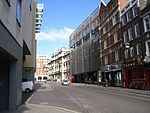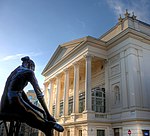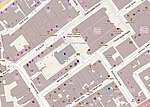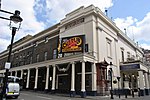Bow Street Police Museum

The Bow Street Police Museum, opened in 2021, is based in the former police station in Covent Garden, London. Bow Street has a unique place in the history of policing in London, with the museum presenting the story of policing and criminal justice in the area from the eighteenth century until 1992, when the police station closed. The current museum of this name is not to be confused with the Metropolitan Police's own small public display of historic artefacts which occupied four galleries and five other rooms on the third floor of Bow Street Police Station from 1949 until the 1980s, then a new site in West Brompton from 2009 to 2020 - that collection is now in storage but a cutlass, rattle and other objects from it are on loan to the Bow Street Police Museum.
Excerpt from the Wikipedia article Bow Street Police Museum (License: CC BY-SA 3.0, Authors, Images).Bow Street Police Museum
Crown Court, City of Westminster Holborn
Geographical coordinates (GPS) Address Nearby Places Show on map
Geographical coordinates (GPS)
| Latitude | Longitude |
|---|---|
| N 51.513611111111 ° | E -0.12166666666667 ° |
Address
Covent Garden telephone exchange
Crown Court
WC2B 5QZ City of Westminster, Holborn
England, United Kingdom
Open on Google Maps










